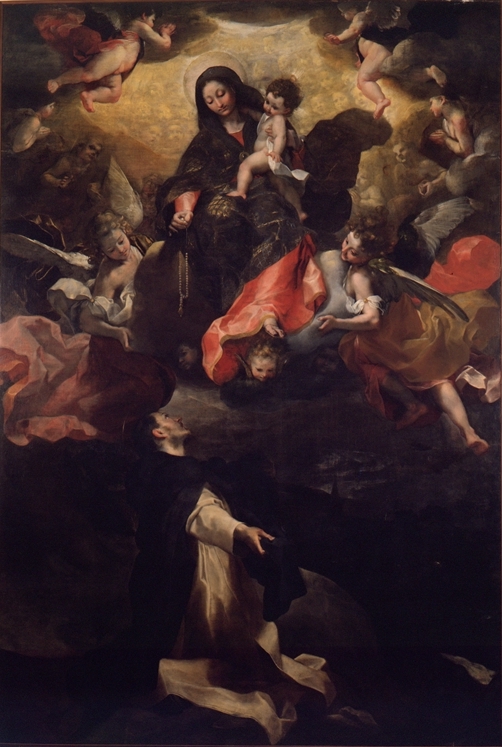Barocci’s Deposition is probably his most famous altarpiece. He was commissioned in 1567 to start the altarpiece, he finished Christmas 1569. The Deposition still hangs in the Cathedral in Perugia. Many historians believe that Barocci would have studied Raphael’s Entombment and some other paintings by him. No one can truly say that Barocci had studied Raphael’s paintings but there are certain characteristics that the people of Perugia would have recognized. Especially the emotion shown with the Madonna and the surrounding figures. The fainting Madonna is very similar to the emotional Madonna of Raphael’s. The surrounding figures in Barocci’s version, are dramatic, Mary Magdalene’s arms are outstretched, reaching toward the fainted Madonna. Another aspect of the painting that the people of Perugia would have at least associated with Raphael’s painting, is the young men that Barocci has depicted taking Christ down from the cross are similar to those of Raphael.
However, that is where the similarities seem to have stopped. Barocci’s Deposition is a registered painting. All the women are at the bottom of the altarpiece, while all the me are above with Christ. I personally don’t think it means anything, but thought it was an interesting aspect of the painting. Of the men helping take Christ down from the cross, the only face we can see is Christ’s and the man who is holding Christ’s feet. I found this another interesting fact.
The composition appears crowded with little open space. The viewer’s eyes have very little place to rest, but the eyes move throughout the altarpiece in an orderly way. Your eyes start at the top of the cross, then moving down the center post of the cross to Christ’s head. Then the eyes move down Christ’s body to the man who is holding Christ’s feet. Then the eyes follow down to the Virgin. From there the eyes travel to the edges of the altarpiece and go back up the ladders to once again land on Christ. Barocci uses diagonals to create a composition that is constantly moving and engaging for the public eye.
 Barocci, Deposition
Barocci, Deposition




